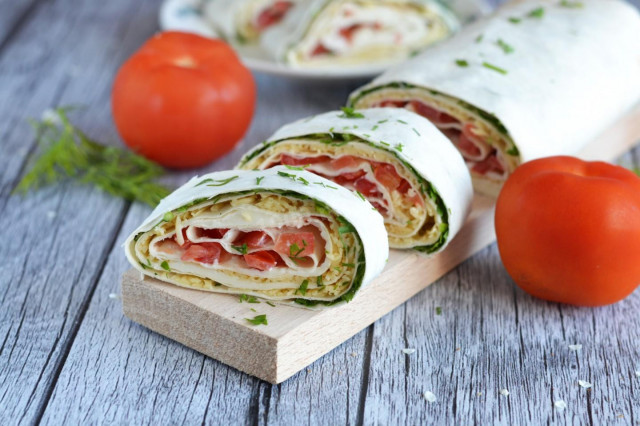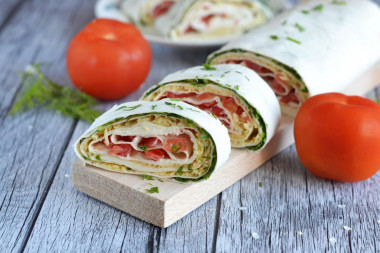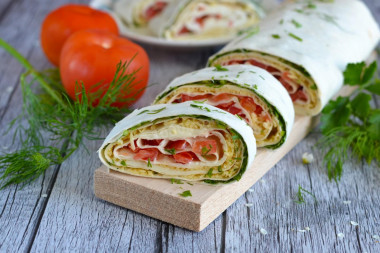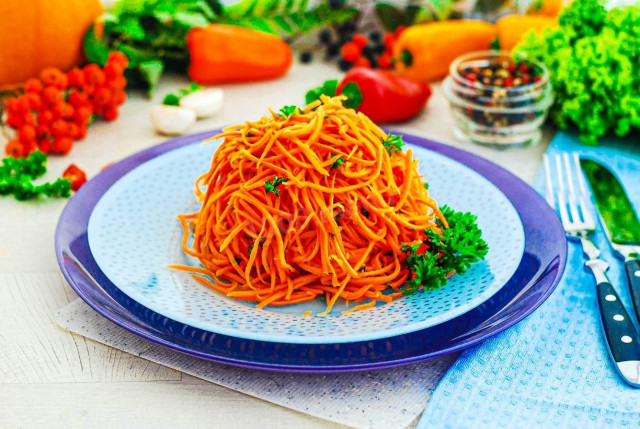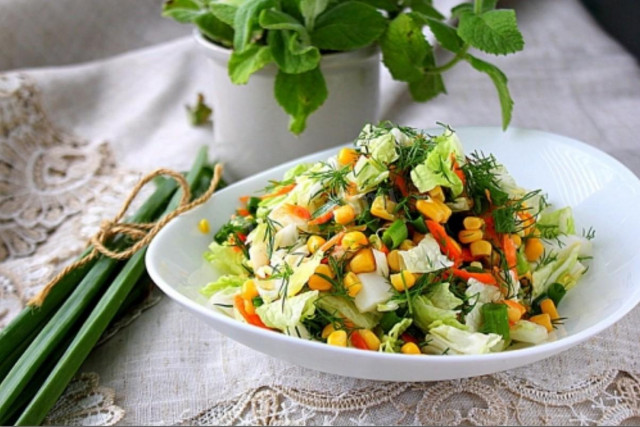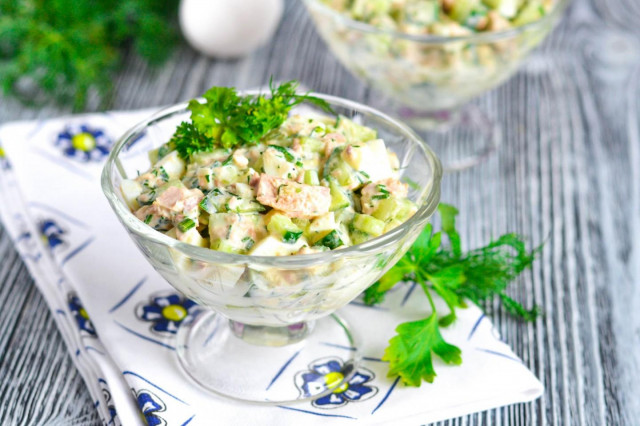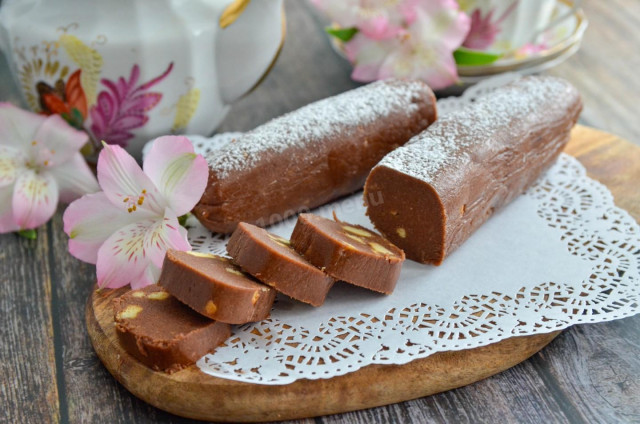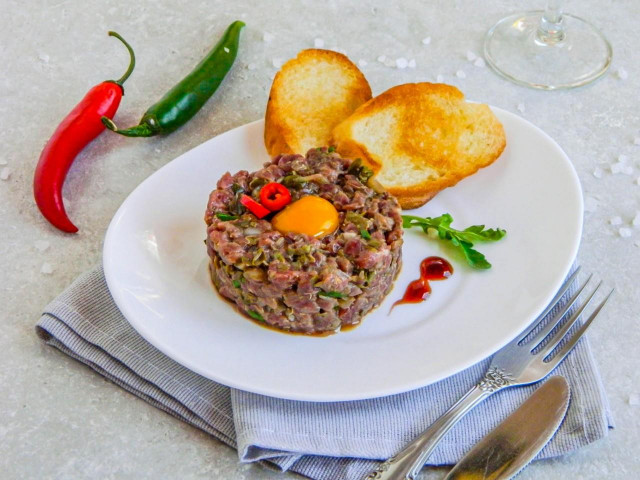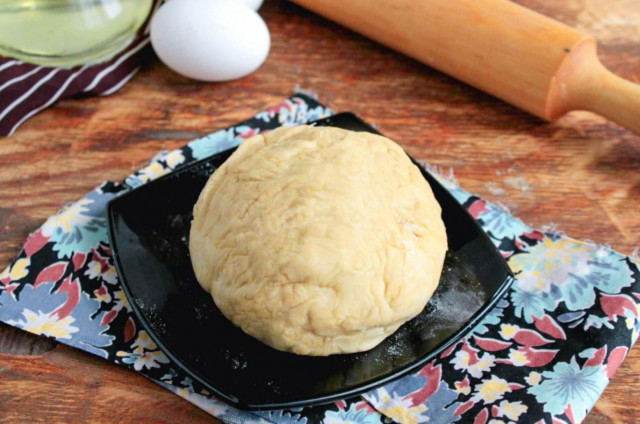Composition / ingredients
Step-by-step cooking
Step 1:
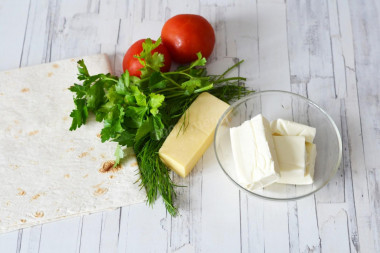
Prepare all the necessary ingredients for the filling. Processed cheese is better to use soft in boxes - it is easier to smear it on pita bread.
Step 2:

Wash, dry and cut tomatoes in half. So that the moisture from the tomatoes does not soak the whole pita bread, it is better to cut out the middle with the seeds. Cut the pulp into small cubes. It is better not to cut tomatoes coarsely, since when folding the roll, they can tear it. For the filling, it is better to choose fleshy tomatoes, in which there is more pulp and less juice.
Step 3:
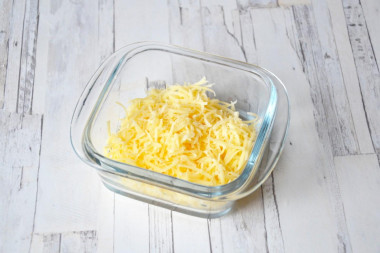
Grate the cheese on a medium or fine grater.
Step 4:
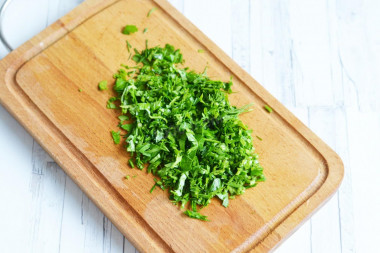
Wash the dill and parsley, dry and chop finely. You can also add green onion feathers, coriander or other herbs. You can replace the greens with the leaves of any green salad (such as Iceberg, Frillis).
Step 5:
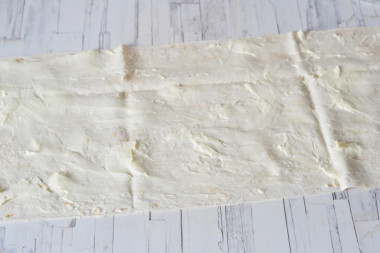
Spread the pita bread sheet on the work surface and spread it evenly with melted cheese. For piquancy, you can add garlic cloves (1-2 cloves) passed through the press to the melted cheese and mix. And only then smear on the pita bread.
Step 6:
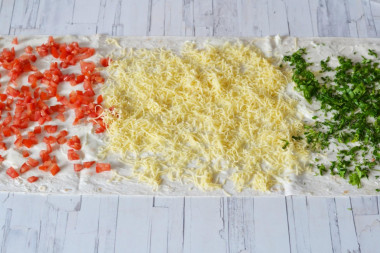
Conditionally divide the pita bread into three identical parts. Sprinkle a third of the pita bread with tomato slices. Sprinkle the second third of the lavash with grated cheese. Sprinkle the last third with chopped herbs. You can sprinkle everything not separately, but mix the whole filling in a bowl and sprinkle it evenly over the whole pita bread.
Step 7:
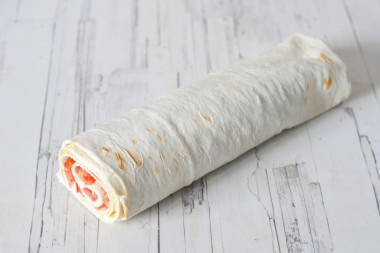
Roll the pita bread into a tight roll, starting from the side with tomatoes, so that all the tomatoes remain in the center of the roll. In this case, tomatoes will not be able to soak the whole pita bread, only if the very middle.
Step 8:
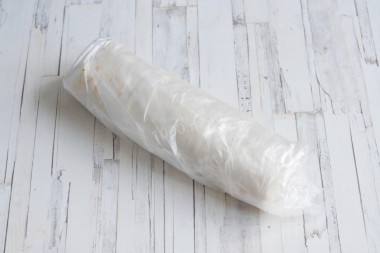
Wrap the resulting roll in plastic wrap or cellophane bag and put it in the refrigerator for 1-2 hours for impregnation.
Step 9:
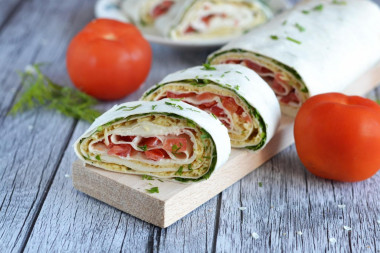
Release the cooled roll from the film, cut into portions and serve to the table. Enjoy your meal!
If desired, you can bake the roll in the microwave or oven for a few minutes. Then the cheese will melt and the roll can be served hot. It will taste like a vegetable shawarma without chicken.
Caloric content of the products possible in the composition of the dish
- Tomatoes - 23 kcal/100g
- Dutch cheese - 352 kcal/100g
- Swiss cheese - 335 kcal/100g
- Russian cheese - 366 kcal/100g
- Kostroma cheese - 345 kcal/100g
- Yaroslavsky cheese - 361 kcal/100g
- Altai cheese 50% fat content - 356 kcal/100g
- Soviet cheese - 400 kcal/100g
- Cheese "steppe" - 362 kcal/100g
- Uglich cheese - 347 kcal/100g
- Poshekhonsky cheese - 350 kcal/100g
- Lambert cheese - 377 kcal/100g
- Appnzeller cheese with 50% fat content - 400 kcal/100g
- Chester cheese with 50% fat content - 363 kcal/100g
- Edamer cheese with 40% fat content - 340 kcal/100g
- Cheese with mushrooms of 50% fat content - 395 kcal/100g
- Emmental cheese with 45% fat content - 420 kcal/100g
- Gouda cheese with 45% fat content - 356 kcal/100g
- Aiadeus cheese - 364 kcal/100g
- Dom blanc cheese (semi-hard) - 360 kcal/100g
- Lo spalmino cheese - 61 kcal/100g
- Cheese "etorki" (sheep, hard) - 401 kcal/100g
- White cheese - 100 kcal/100g
- Fat yellow cheese - 260 kcal/100g
- Altai cheese - 355 kcal/100g
- Kaunas cheese - 355 kcal/100g
- Latvian cheese - 316 kcal/100g
- Limburger cheese - 327 kcal/100g
- Lithuanian cheese - 250 kcal/100g
- Lake cheese - 350 kcal/100g
- Gruyere cheese - 396 kcal/100g
- Processed cheese with 60 % fat content - 354 kcal/100g
- Processed cheese with 45% fat content - 294 kcal/100g
- Cheese "megle" - 590 kcal/100g
- Tartar cheese - 348 kcal/100g
- Cheese "cheese "shavru" (goat) - 173 kcal/100g
- Viola cheese - 307 kcal/100g
- Parsley greens - 45 kcal/100g
- Dill greens - 38 kcal/100g
- Armenian lavash - 236 kcal/100g
- Lavash - 277 kcal/100g

